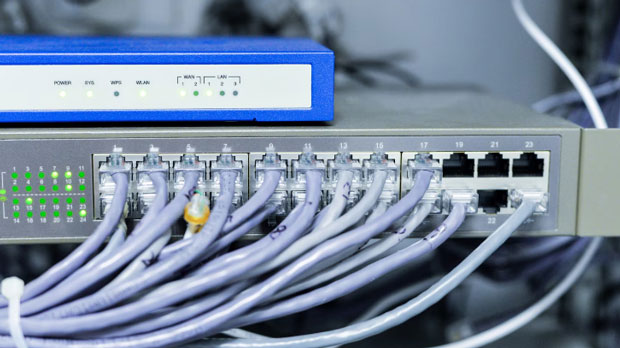In the world of online services, proxies play a crucial role in securing user anonymity, enhancing speed, and offering reliability. static proxies, in particular, are preferred for tasks that require stable IP addresses over an extended period. This article will provide an in-depth analysis and comparison of two popular static proxy providers— PYPROXY and USAProxy—focusing on performance and latency. We will examine their key features, performance metrics, and user experience to help businesses and individuals make informed decisions when selecting a proxy service. Understanding Static Proxy ServersBefore delving into the comparison between PyProxy and USAProxy, it is essential to understand what static proxy servers are and how they function. A static proxy assigns a fixed IP address to a user’s session, which remains the same throughout the session. This stability is critical for users who need to maintain the same IP address for specific tasks, such as web scraping, accessing geo-restricted content, or performing research that requires consistent IP usage.Compared to rotating proxies, which change IPs periodically, static proxies are more reliable for use cases where maintaining the same IP address is important. As such, the performance and latency of static proxies become key factors when selecting a service provider.Comparing PyProxy and USAProxyBoth PyProxy and USAProxy offer static proxy services, but they differ in terms of features, network infrastructure, and geographical reach. To compare these two services effectively, we will focus on four main aspects: reliability, latency, performance, and customer support.1. ReliabilityReliability is one of the most important factors when choosing a proxy service. Users need a proxy that provides uninterrupted service with minimal downtime. Both PyProxy and USAProxy have proven track records of reliability, but their performance can vary depending on the region and specific use cases.PyProxy is known for its robust infrastructure and consistency in providing stable IP addresses. The service operates a wide range of static proxies with minimal downtime, which is crucial for tasks that require a persistent connection.On the other hand, USAProxy specializes in U.S.-based static proxies, making it an excellent choice for businesses or individuals who specifically require American IPs. While USAProxy also offers reliable service, users have reported occasional connection issues when connecting to regions outside the U.S. This could impact the overall reliability of the service for global users.2. Latency: A Critical FactorLatency refers to the delay experienced between sending a request and receiving a response. Lower latency is crucial for tasks such as real-time data collection, gaming, or any other application requiring quick response times.In terms of latency, PyProxy tends to perform better for users in regions closer to their data centers, particularly in North America and Europe. The infrastructure of PyProxy is optimized for low latency and consistent speed, which makes it ideal for users looking for fast and reliable proxy connections.USAProxy, however, has slightly higher latency compared to PyProxy, especially for users located outside the United States. This is primarily due to its network being more concentrated within the U.S. itself, which can result in longer response times for users connecting from distant locations like Asia or Europe.3. Performance: Speed and BandwidthThe performance of a static proxy is often measured by its speed and available bandwidth. Faster proxies with higher bandwidth can handle more requests and are ideal for tasks like web scraping, data crawling, or streaming.PyProxy excels in performance, with high-speed connections and a broad bandwidth allocation for its users. This makes it a solid choice for businesses and individuals who require proxies for intensive tasks like large-scale data scraping or high-definition video streaming.In contrast, USAProxy, while offering competitive speeds, generally provides a more limited bandwidth compared to PyProxy. This limitation could pose challenges for users who need proxies to handle large volumes of data or high-speed applications. For everyday browsing or moderate tasks, USAProxy is more than sufficient, but for high-demand applications, PyProxy comes out ahead.4. Geographic Availability and Target AudienceGeographic availability is another important aspect of proxy services, particularly for users who need access to content from specific regions or countries. PyProxy offers a broader range of static proxies across multiple locations worldwide, including the U.S., Europe, and Asia. This makes it a great choice for users who require proxies from various countries and regions.USAProxy, as the name suggests, specializes in U.S.-based proxies, making it the ideal solution for users who specifically need U.S. IP addresses. While it is perfect for accessing U.S. content or services that are restricted to American users, those who need proxies from outside the U.S. may find it limiting.5. Customer Support and Service QualityCustomer support is another critical factor when evaluating proxy services. Both PyProxy and USAProxy offer customer support, but their response times and service quality can differ.PyProxy offers 24/7 customer support, with a well-established ticketing system for handling technical issues and inquiries. The support team is generally quick to respond and provides detailed solutions to problems, which is highly beneficial for users who rely on proxies for business-critical tasks.USAProxy also offers customer support, but the responsiveness may not be as fast as PyProxy's, especially during peak hours. Although USAProxy has improved its customer service over the years, users have reported longer wait times for issue resolution.6. Pricing and Value for MoneyWhen it comes to pricing, both PyProxy and USAProxy offer competitive rates, but their pricing structures differ slightly. PyProxy offers a more flexible pricing model with various packages tailored to different needs, making it a more cost-effective solution for users who require proxies from multiple regions.USAProxy, while a little more expensive, justifies the higher cost with its specialized focus on U.S. proxies. For users who only need American IPs, USAProxy can still provide good value for money, particularly for users in the U.S. who require consistent, high-speed access.Conclusion: Which Proxy Service Should You Choose?In conclusion, both PyProxy and USAProxy offer strong static proxy services with varying strengths. PyProxy is the better choice for users who require a wide variety of proxies across multiple regions, with lower latency and higher performance. Its global network infrastructure and flexibility make it an ideal choice for large-scale operations and businesses.On the other hand, USAProxy is an excellent option for users who specifically need U.S.-based proxies. While it may not offer the same level of performance as PyProxy for global use cases, its specialized service for U.S. IPs makes it highly suitable for tasks that require American IP addresses.
Oct 16, 2025



































































